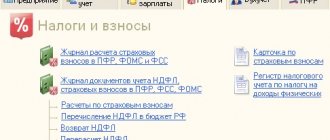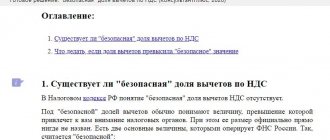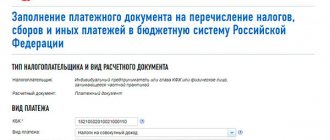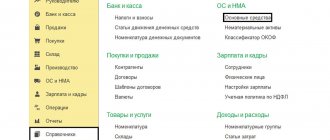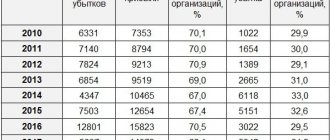Taxpayers submitted reports for 2015 and for the first quarter of 2016. And immediately for these two periods, requests from inspectorates began to pour in demanding clarification of the indicators reflected in the accounting and tax reporting. Inspectors also require the share of VAT deductions to be justified.
Many companies carefully explain everything that interests fiscal officials. However, is it really necessary to write detailed explanations in response to a request? Perhaps, even without them, there is a logical explanation for the notorious “discrepancies” in reporting. Individual indicators in declarations should not coincide at all. This means that there are no discrepancies and there is nothing to explain. Tax officials should be well aware of this.
The company that turned to me for help also received requests from fiscal officials demanding clarification of the indicators reflected in the reporting. The organization had many branches, so the number of requests coming from different inspections grew alarmingly. In this regard, there is a need to systematize all requests and requirements received.
The company's management decided to optimize the work of the accounting department. This was necessary in order to avoid copying unnecessary documents and writing unnecessary explanations. After all, everything took up a lot of working time. The management came to the conclusion that it was necessary to develop a unified approach to the formation of explanations for unlawful requests.
Is it necessary to explain the discrepancy between VAT and income tax?
The company received a request to provide clarifications in the form approved in Appendix No. 1 to the order of the Federal Tax Service of Russia dated 05/08/15 No. ММВ-7-2 / [email protected] The reason for sending the request was a desk audit. The fiscal authorities requested clarification on the indicators reflected in individual lines of the balance sheet (Appendix No. 1 to the order of the Ministry of Finance of Russia dated July 2, 2010 No. 66n). And they also demanded to attach documents confirming the reasons for the decrease in the “Financial Investments” indicator in the balance sheet asset.
But the Tax Code does not allow desk audits of financial statements! Controllers have the right to request documents and explanations on issues related to the calculation and payment of taxes (subclause 1, clause 1, article 31, articles 88, 93 of the Tax Code of the Russian Federation). And financial statements are necessary for users of these statements to make economic decisions (Part 1, Article 13 of Federal Law No. 402-FZ dated December 6, 2011).
In addition, the tax authorities monitor compliance with tax legislation (the regulations on the Federal Tax Service, approved by Decree of the Government of the Russian Federation dated September 30, 2004 No. 506), the Ministry of Finance of Russia is responsible for accounting reporting (Part 1 of Article 22 of the Federal Law dated December 6, 2011 No. 402-FZ, Decree Government of the Russian Federation dated June 30, 2004 No. 329). Therefore, in the request, the inspectorate may refer to a desk audit of a specific declaration and its indicators. And inspectors do not have the right to demand explanations and documents regarding financial statements. However, it is still worth responding to such a request from the inspection. A competent refusal to provide explanations will save the company from receiving a report on the discovery of facts indicating tax violations (Article 101.4 of the Tax Code of the Russian Federation), as well as from the need to further challenge this report. With my help, the organization prepared a letter refusing to comply with the inspection requirement. In response to a request for clarification, the company indicated that tax legislation does not provide for chambers in relation to accounting statements. At the same time, fiscal officials do not have the authority to control it.
Reconciliation of VAT accounting data
Home / Services / 1C support and maintenance / 1C: Support Kit (1C: ITS)
The 1C:Reconciliation service provides automatic reconciliation of invoices with suppliers and customers at any time convenient for the user - both promptly during the accounting process and before sending a VAT return to the Federal Tax Service.
Service capabilities:
- requesting information about issued invoices from suppliers and automatically loading them into the 1C program;
- automatic comparison of invoices of counterparties and your organization;
- managing the provision of information about received invoices to customers in response to requests received from them;
- convenient reports with reconciliation results - with visual highlighting of discrepancies and the ability to decipher them back to the original document.
Advantages
- the service allows you to organize regular prompt reconciliation of invoices without waiting for the end of the reporting period;
- support for general reconciliation with all counterparties immediately before generating a declaration and sending it to the Federal Tax Service;
- reconciliation is performed directly in the program - without the need to upload and download data that is a trade secret to third-party applications or third-party sites;
- for each identified discrepancy, you can immediately go to the source document for study and correction, if the source document is included in the 1C information base;
- the user can plan his work in a way that is convenient for him and his partners, so as not to leave the analysis of complex situations until the last days before the deadline for submitting the VAT return.
The main changes in the form and procedure for submitting a VAT tax return are aimed at ensuring that the tax service can automatically compare information about the transactions of counterparties, monitor and identify organizations that have understated their tax liabilities. For this purpose, the Federal Tax Service, as part of its internal desk control, carries out a total automatic reconciliation of data from the purchase and sales books of all taxpayers. The possibility of a similar preliminary check for taxpayers is implemented in the 1C:Sverka service.
The Vendor Invoice Reconciliation report compares your database data with your vendor data. The compliance of invoices is checked using three parameters: number, date, amount.
The report is located in the “Purchases” – “Reconciliation of VAT accounting data” section. It can be generated either for one counterparty or for all of them for which you have loaded data into the database. Lines with discrepancies are displayed twice in the report - “according to our data” and “according to the supplier” and are highlighted in red. There are 4 possible results of reconciliation:
- the data matches
- an invoice with the same number and dates is not in the counterparty’s database
- the counterparty does not have an invoice with such numbers and dates
- The data differ in amounts.
How to load supplier data into the database?
Supplier data in the buyer's database is stored as documents "Registers of supplier invoices" in the section "Purchases" - "Reconciliation of VAT accounting data". You can download them either using the “Download” button, specifying the path to the corresponding .xml file, or from e-mail to all contractors who sent the registers. To be able to download or send registers via email, you need to set up an email account in the program.
How to upload data to the buyer?
As a supplier, you can send reconciliation data to the buyer. To do this, you need to generate a report “Register of issued invoices” , which is located in the “Sales” - “VAT Reports” section.
This report can be downloaded using the appropriate button or sent to the buyer by email directly from the form.
To send by email, you must set up an email account. Its settings are located in the “Administration” - “Organizer” - “System email account setup” section.
Specify the settings for outgoing and incoming mail servers. If you already have an account in the program, check whether the ability to receive email is enabled.
You can get more detailed advice: 8 – Consultations on Electronic reporting 8 – Technical support 8 – Consultations on 1C: Salary 8 – Consultations on 1C: Accounting
There is no direct connection between “profit and VAT”
Almost every company received a requirement to provide explanations as part of a desk audit regarding VAT. Fiscal officials are often asked to explain the reasons for the discrepancies between the indicators that make up the revenue in the annual income tax return and the size of the tax bases reflected in the VAT returns for all four quarters of the reporting year. What documents are on the camera for personal income tax? It is illegal to demand >>>
In my case, the company received such a requirement as part of a desk audit of the VAT return for the fourth quarter of 2015. In addition, inspectors demanded to explain why the share of VAT deductions exceeds 89 percent. This is the permissible share of deductions used by companies to independently assess the risks of inclusion in the inspection plan (Appendix No. 2 to the order of the Federal Tax Service of Russia dated May 30, 2007 No. MM-3-06 / [email protected] hereinafter referred to as the Concept). In the third quarter of 2015, the share of deductions was 93 percent, in the fourth quarter of 2015 - 92 percent. The desk audit was carried out for the fourth quarter of 2015 - inspectors could only demand clarification for this period. In the letter, the company reminded fiscal officials that the tax period for VAT is a quarter (Article 163 of the Tax Code of the Russian Federation). However, difficulties arose in preparing the answer. It turned out that it is difficult to explain the specific reason for the discrepancies in the declarations. The fact is that the concept of “income” for profit tax purposes (Articles 248–251 of the Tax Code of the Russian Federation) and the concept of “tax base” for VAT purposes are not identical. Consequently, revenue for the purposes of calculating income tax and the tax base for VAT purposes may be different. The company carried out both transactions subject to VAT and transactions not subject to taxation (Article 149 of the Tax Code of the Russian Federation). Discrepancies in indicators can arise not only due to these nuances, but also due to the use of completely legal optimization methods. This, in particular, issuing invoices at a later date. This method is often used at the end of the year, when the company closes large contracts. She may receive significant revenue, and the amount of VAT payable will also increase. To this amount are added advances from buyers, from which it is also necessary to calculate VAT (clause 1 of Article 167 of the Tax Code of the Russian Federation). In this case, for goods (advances) shipped (received) in the last days of the reporting year, invoices are issued at the beginning of the next year. After all, the supplier must issue an invoice to the buyer within five days from the date of shipment or receipt of an advance payment (clause 3 of Article 168 of the Tax Code of the Russian Federation). This means that it is possible to postpone the payment of VAT from January 25, 2021 to April 25, 2016 (Clause 1 of Article 174 of the Tax Code of the Russian Federation). Of course, the last thing the organization wanted to do was explain such reasons for discrepancies in the controversial declarations. Therefore, the society decided to refuse this part of the requirement. The fact is that inspectors most often require clarification in connection with errors or contradictions in declarations (clause 3 of Article 88 of the Tax Code of the Russian Federation). And the company asked the tax authorities to indicate what these errors or contradictions were. We also asked the inspectors to provide a link to the regulatory legal act, which states that revenue for the purposes of calculating income tax must be equal to the VAT tax base. In the letter, the company emphasized that Chapters 21 and 25 of the Tax Code of the Russian Federation established different procedures for the formation of these indicators.
Control ratios: what inspectors look for when checking declarations
Document:
Information from the Federal Tax Service of Russia dated January 9, 2013 “On methods of mathematical control of the correctness of filling out declarations.”
What has changed in work:
Before submitting declarations to the inspectorate, it is worth checking them against the control ratios that the tax authorities themselves use.
Employees of the Federal Tax Service of Russia recently allowed inspectors to bring the so-called control ratios to the attention of companies. They are used by tax officials themselves during desk audits. This is how they identify errors in reporting or look for contradictions between some indicators, and then ask the company for clarification. This is provided for in paragraph 3 of Article 88 of the Tax Code of the Russian Federation.
Previously, this information was strictly an internal document. Now the control ratios are publicly available on the Federal Tax Service website in the “Tax Reporting” section. The ratios for VAT, income tax, UTII and other taxes are posted there. Auditors recommend that companies use this information for self-audit to eliminate common reporting errors. We advise you to do so.
Important detail If you used control ratios and found obvious discrepancies in reporting that are not an error, it is better to immediately attach an explanatory note to the declaration.
Check the main indicators in the declarations before submitting them to the tax authorities (see also the table below). This way you will eliminate at least obvious errors. You may also see discrepancies that are not errors, but will certainly attract the attention of tax authorities. If such discrepancies in amounts are very significant, it is better to immediately attach explanations to the statements for controllers.
What control ratios to check in VAT and income tax reports
| Control ratio | What to check if this relationship does not hold |
| VAT | |
| If lines 150 and 130 of section 3 > 0, then line 110 of the same section should be equal to line 150. Tax authorities check these indicators on a cumulative basis (that is, they add up the data of all declarations from the beginning of the year) | Lines 150 and 110 of Section 3 must be completed if you accepted VAT on advances for deduction. Therefore, check whether you have recovered these tax amounts after you have received the goods from the supplier. Otherwise, you have violated the requirement of subparagraph 3 of paragraph 3 of Article 170 of the Tax Code of the Russian Federation |
| Column 3 of line 200 of section 3 must be less than or equal to the sum of column 5 on lines 010, 020, 030, 040 | In this case, we are talking about a situation where the company received an advance payment from customers. The following error is possible here. You have deducted VAT from the prepayment, but have not yet delivered the goods to the buyer (clause 6 of Article 172 of the Code) |
| The indicator in column 5 of line 060 of section 3 of the declaration must be greater than or equal to column 3 of line 160 of the same section | If your company carried out construction and installation work for its own consumption, at the end of each quarter it was necessary to charge VAT on the cost of these works. At the same time, the same amount of tax could be claimed as a deduction (letter of the Federal Tax Service of Russia dated March 23, 2009 No. ШС-22-3/ [email protected] ). That is, the amount of deduction for construction and installation work in the VAT return should usually be equal to the amount of tax calculated for this operation |
| For companies that started using simplified procedures this year. If the balance sheet contains balances of materials and goods, then the indicator calculated as: column 5 line 090 - (column 5 line 100 + column 5 line 110) section 3 of the VAT declaration should be > 0 | Has your company switched to simplification? This means that in the fourth quarter you had to restore VAT on materials and goods that you would use under the special regime. This is provided for in subparagraph 2 of paragraph 3 of Article 170 of the Code. If you have not done this, make an update on VAT for this period |
| Income tax | |
| If in the cash flow report the indicator of line 4211 > 0, then line 010 of Appendix No. 3 to sheet 02 of the income tax return must be greater than zero. The same applies to line 030 of the same application | Check whether you took into account income from the sale of fixed assets when calculating income tax. As required by paragraph 1 of Article 268 of the Tax Code of the Russian Federation |
| If in the cash flow statement the value of line 4322 > 0, then the sum of lines 110 and 120 of sheet 03 of the income tax return must also be greater than zero | It is possible that you withheld tax on dividends paid to the founders, but simply did not fill out sheet 03 of the income tax return |
Let us note that the tax authorities, of course, have not revealed all their secrets. For example, many of the published relationships target purely arithmetical errors. And it’s quite small to compare data from declarations for different taxes. And also to analyze the differences between tax and financial reporting indicators. Although in practice, controllers usually compare all this.
What are the VAT requirements?
After calculating data for 12 months, the company concluded that the share of deductions exceeds 89 percent. To find out what affects this indicator, we examined VAT returns in detail.
It turned out that the inspection included in the calculation the entire VAT, taking into account advances, both accrued for payment to the budget and declared for deduction. However, the Federal Tax Service of Russia believes that the share of VAT deductions should be calculated without taking into account accruals and deductions for advances (letter No. AS-4-2/12722 dated July 17, 2013). By recalculating the share of deductions, you can see how much the result will change if you take into account in the formula only the indicators of VAT accrued and presented on completed transactions and operations.
In our case, the recalculation gave an adjustment in the right direction. Without taking into account advance VAT, the share of deductions decreased by 2 percent and the deviation in the fourth quarter of 2015 was only 1 percent. Having recalculated the share of deductions due to VAT amounts from advances issued and received, the company came to the conclusion that prepayment amounts are the main reason influencing the level of the share of deductions. That is, activities related to sales in the billing period actually do not produce deviations in the share provided for by the Concept. The company sent these explanations, along with counter-calculations, to the inspectorate.
What are the income tax requirements?
Income tax requirements are often no less mysterious and even more time-consuming to explain than VAT. The company received a request as part of a desk audit of the income tax return for 2015 with a request to explain the discrepancies between the expenses reflected in the statement of financial results (Appendix No. 1 to the order of the Ministry of Finance of Russia dated July 2, 2010 No. 66n) and the expenses indicated in the income tax return. income tax. The inspectors also asked the question “why the tax base for 2015 did not change compared to the tax base for 9 months of 2015, despite a significant increase in revenue amounts.”
The approach to writing explanations on such issues depends on the desire and scrupulousness of the chief accountant. If the amount of expenses in tax accounting is less than in accounting, then we can limit ourselves to a short answer that the difference was formed due to expenses that are not accepted for tax purposes. The company itself decides whether to attach documents or not. After all, the inspectorate can demand documents in a camera room only in a limited number of cases.
The company explained that the increase in expenses occurred at the end of 2015 due to the creation of a reserve for doubtful debts in tax accounting. Because of this, a difference arose between accounting and tax accounting and the tax base for income tax did not increase significantly.
Tax burden coefficient
What is the tax burden, how to calculate it and what is its role in business? We'll tell you in the article.
Tax burden coefficient: what is it and how is it calculated
The tax burden is one of the indicators of a company's financial stability. The tax burden can be an absolute value - this is an exact figure, the burden of paying taxes. It can also be relative - this is the percentage of funds that the company allocates from its revenue to pay taxes. To calculate the relative burden, you need to divide the amount of company taxes for the year by the amount of revenue for the year. It is the relative indicator that the Federal Tax Service uses when drawing up a plan for on-site inspections. Companies whose tax burden is lower than the industry average risk ending up on the “suspect list.” First of all, such taxpayers are asked for clarification, and if they do not clarify the situation, an on-site inspection is arranged.
Banks use tax burden indicators when analyzing risks. Of course, the tax burden is not the only criterion when checking solvency (there are about 80 other indicators), but it is an important one. The Central Bank has established that the safe minimum tax burden is 0.9% of the debit turnover on the account. A large tax burden usually means that a company may have low profitability. To calculate this ratio, revenue data must be taken from the financial statements (line 2110), taxes for the year - from tax reporting.
Tax burden level = the amount of your taxes for the year / revenue for the year × 100%
It is useful to calculate the tax burden at different levels of the economy:
- for the state or regions;
- by type of industry;
- by groups of enterprises that have a similar type of activity to you;
- for specific economic entities;
- for one person.
Depending on the level, the calculation base may change: it can be revenue with or without VAT, enterprise income, costs or profit, planned income/profit.
Tax burden coefficient and industry average
The tax burden coefficient depends on the type of economic activity of the company: for each type, a specific average value is determined individually at the legal level. It may happen that your company's ERR is lower than the industry average. This is not always good: the tax authorities may come to you. “Below average” means that there is a very real possibility that you pay less in taxes than other players in the industry. Or you have errors in your calculations.
To find out the industry average, you don’t need to go or call the tax office - all the information is posted on the Federal Tax Service website, and tax officials post it annually until May 5 of the following year.
Tax burden for income tax and VAT
The income tax burden can be determined based on the tax return data.
Income tax burden = (all calculated tax / (revenue + income from non-operating activities)) × 100%
A figure of less than 2-3% means your tax burden is low.
VAT burden = (VAT deductions / VAT accrued) × 100%
The values for deductions and accrued VAT must be taken for the previous four quarters. The amount of deductions that does not exceed 89% is considered normal. Another method that the tax office uses is to calculate the safe share of deductions based on the declaration data for the quarter and compare it with the average share of deductions in the region.
VAT burden = VAT / Tax base for the domestic market × 100%
The tax base for the domestic market can be obtained from the sum of lines 010, 020, 030, 040, 050, 060, 070, column 3 of section 3 of the VAT return. For trading companies, the ratio of the VAT amount to the tax base should be more than 1%, for others - from 3%.
The Federal Tax Service website has a tax calculator for calculating the tax burden. Organizations on OSNO can use it. Now, with its help, it is easy to calculate your tax burden for the period 2016–2019 and compare it with the industry average. In case of discrepancies, it is worth preparing explanations in advance to provide them to the tax authorities upon request.
What has changed in 2021
The tax burden indicators for 2021, which will be relevant for scheduling audits in 2021, are established in Appendix No. 3 to the order of the Federal Tax Service of Russia dated May 30, 2007 No. MM-3-06 / [email protected] A different load indicator is established for each type of activity according to OKVED2 . But it happens that a company cannot find its type of activity in the list. For such a situation, the Federal Tax Service has provided a special procedure for action, described in letter dated August 22, 2018 No. GD-3-1 / [email protected] - for comparison, you should take the level of the tax burden in the Russian Federation, and not in the industry.
This year, the tax office has the right to check your data for the previous three years, so you need to carefully compare the current load indicators with previous years. If there is a strong deviation, you will probably be asked to explain the reason or ordered to check.
Do you want to quickly calculate and pay taxes?
The cloud web service Kontur.Accounting allows you to conduct all necessary operations via the Internet. Get acquainted with the capabilities of the service for free for 14 days, keep records, calculate salaries, report online and work in the service together with colleagues. Try for free


